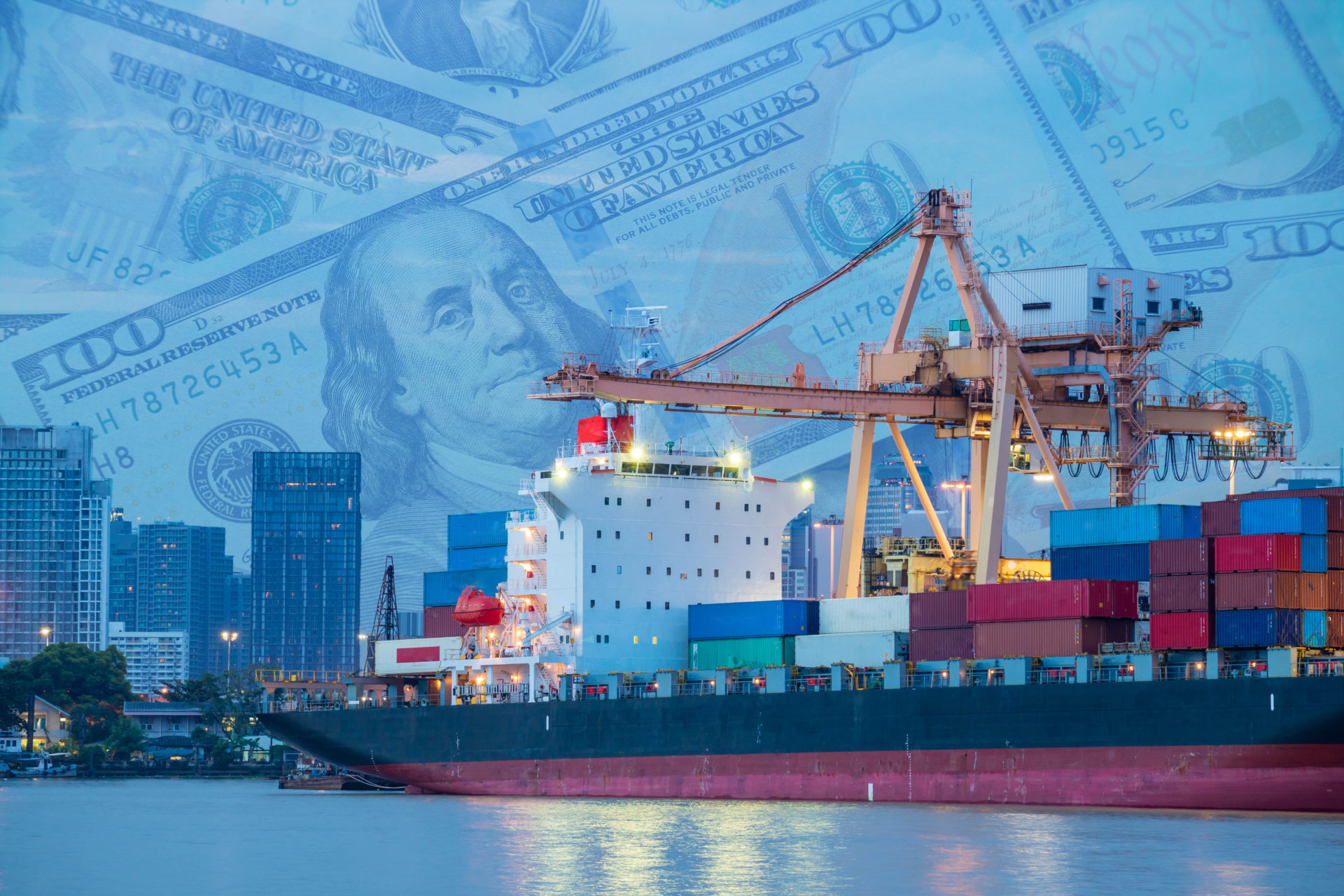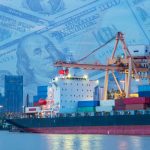Yes, Virginia, There Is a Peak Season
So some have deemed to tell you there is no peak season this year? Virginia, your little friends are wrong. They have been affected by the skepticism of a skeptical age. There is, indeed, a peak season this year.
This is not the peak season of the last few years, no. A singular situation created a singular period – and rather long one at that – of heightened cargo volumes, increased supply chain disruption, and soaring freight rates. Strangely, a feeling of what is will continue to be often fills people despite the knowledge that what goes up, must come down. For example, carriers – making record profits off of record volumes – began ordering new ships, increasing industry capacity, like the influx of cargo would never end.
Of course, it would end. Last year, the fall began. It was inevitable that cargo volume would eventually tumble. When it did, record high freight rates became unprofitably low ones.

As volumes remained much reduced and low freight rates stayed fairly flat for months, that feeling crept in again. That feeling that creates phrases like “the new normal.” Low volumes and low freight rates are here. They’ll stay here. There’ll be no peak season. But things that fall also have a tendency to rise again. And volumes and freight rates have risen. Yes, a peak season has arrived.
Increased Cargo Volume & Freight Rates – the Basic Signs of Peak Season
Carriers imposed general rate increases (GRIs), which have managed to stick so far. Blanked (cancelled) sailings to reduce capacity and an increase in cargo volume have helped carriers to get spot rates higher than contracted freight rates and keep them there for the moment.
Bill Mongelluzzo reported on this in the Journal of Commerce (JOC) and shared data on the volume increases over the last few months:
US imports from Asia continue to increase each month. Imports totaled 1.42 million TEUs in June, up from 1.08 million TEUs in March, 1.34 million TEUs in April and 1.37 million TEUs in May, according to PIERS, a sister product of the Journal of Commerce within S&P Global.
And that brings us to a legitimate peak season. Certainly not the strongest we’ve ever seen, but it is a peak season nonetheless.
Weaker Peak Seasons Are Still Peak Seasons
There can be some fuzziness around when the international shipping peak season starts and ends. Who’s defining it and the strength of the economy in any given year expands and shrinks the time period. Often by two to four months. However, we’re arriving on the months, August and September, that are always considered peak season. You could think of them as peak peak season. It’s possible in a bad economic year that the peak season fizzles by the end of September, but normally the first half of October is considered standard peak season as well. Perhaps this will be a September-fizzling type of year. Some are predicting that. I wouldn’t go quite so far.
However, while I’ve been predicting there to be a peak season this year, I’ve also been saying I expect it to be a weaker one to go along with the weaker economic outlook we’re in.
It didn’t take prescience for me to repeatedly predict in this blog that we would have a peak season this year. Yes, there are still many retailers overstocked. Yes, there is economic uncertainty and increasing percentages of spending going to travel and services to curtail consumer spending on goods. However, the back to school and holiday shopping seasons are still coming. And weak economic years still have peak seasons.
It would seem to me, predicting no peak season would be much more of a long shot than predicting there would be one. In fact, it felt like such a safe bet that saying we’d have a peak season, despite voices to the contrary, didn’t even seem like much of a prediction at all. The focus probably should have been more on what kind of peak season we would end up having.
Appearances May Be Weaker Than Reality
One of the most common words I’ve been hearing, and that I’ve even used myself, to describe this peak season is “muted.” But I’m starting to think this peak season may not be quite as weak as it appears. The problem is one of perspective.
Often, cargo volumes and freight rates are reported on a year-over-year basis. After the pandemic hit, shutdowns, stimuli checks, supply chain disruptions/potential disruptions, and perhaps even plain fear helped create massive spikes in shipping demand and freight rates. It took a couple years for things to calm down, demand start dropping, and freight rates to fall. Comparing this year’s peak season to the kind of numbers we saw through the pandemic and in its early aftermath would make it appear especially weak. Terrible even. After all, we were seeing record shattering volume and freight rates during what felt like a never-ending peak season.
However, when you compare this peak season to pre-pandemic volume, it doesn’t look so bad.
Consider how Mongelluzzo opened his JOC article I quoted above:
After three general rate increases (GRIs) and four consecutive months of rising imports from Asia, trans-Pacific carriers are achieving their goal of pushing spot rates higher than contract rates as they enter what is expected to be a peak shipping season that is muted compared with last year but on par with pre-pandemic 2019.
What Was 2019 Peak Season Like to Compare?
One would think on par with pre-pandemic 2019 might put things closer to where the peak season should be if you remove the aberration of the pandemic from between then and now. Of course, that’s quite a simplification.
Economically, the country was doing well in 2019; however, the international shipping peak season was actually on the weaker side. In fact, some international shipping companies, such as freight forwarders, struggled at that time because of the trade war with China. President Trump had imposed increasing amounts of tariffs on goods imported from China with more threatened to come if a trade deal couldn’t be reached.
Before the year was over, we eventually got the trade deal from China, but it was immediately overshadowed and basically ignored because we also got COVID-19 from China. We didn’t get the deal until the peak season was over and well-weakened in the process.
2019 import volumes from China had dropped from what they would have been. However, some of what would have been lost peak season volume was made up for through sourcing goods from other countries. Sourcing domestically was another option some businesses took, significantly boosting U.S. manufacturing, but that obviously didn’t make the peak season stronger. Increased U.S. manufacturing was, however, a positive for the U.S. economy in 2019.
While weakened by the trade war, there was still a peak season in 2019. And it wasn’t as weak as many thought it could be. There was weak global trade growth in 2019 from a robust 2018, but one thing that kept the peak season from becoming very weak was many shippers rushing to beat a December tariff hike. Thankfully, reaching the trade deal with China in the days leading up to the scheduled hike stopped it from happening.
Outlook on 2023’s Peak Season
Being back to a similar level to 2019’s peak season now, when the economic outlook is much, much worse, might not be altogether terrible.
In general, though, we’re used to year-over-year growth in global trade. Thus, if we were simply returning to pre-pandemic peak season trade levels, we might think we should have grown from 2019’s peak season rather than just being on par with it. However, we can’t simply pretend the years since the pandemic struck never happened. Our trade levels skyrocketed, unnaturally so, from where they were previously. Dropping below where we might normally have ended up as we level out and likely start climbing again shouldn’t be all that surprising.
There is also an interesting factor that may play a role in why we’d be falling back to pre-pandemic trade levels: Trump’s tariffs.
When Trump rose to the presidency, he brought protectionist policies with him that prioritized cultivating U.S. manufacturing over global trade, which had been more the focus for years. When Biden came into office, his administration got busy tearing down any Trump Administration policy it could. Surprisingly, the Biden Administration never reversed Trump’s tariffs on China.
Economic uncertainty seems a much larger factor in limiting the peak season than those tariffs. Especially as shippers and retailers have had time to find alternate sourcing, whether from home or abroad, if they wish to avoid the tariffs. Still, the tariffs may be playing a part in making this peak season similar to 2019’s. Are they still pushing retailers toward domestic sourcing, U.S. manufacturing?
We also have to watch how August, September, and October play out.
Demand has been increasing. Carriers have been cutting capacity to control supply. Freight rates have been rising. If you want to compare this peak season to the last few, it won’t look like much. But it already looks as strong as the peak season before the pandemic and it could still very well prove to be stronger.
Expect freight rates to increase with the onset August. More GRIs and peak season surcharges (PSS) should hit. I’d be surprised if carriers were unable to hold the increase they gain into September. From there, we’ll follow how the rest of peak season plays out. Some think it will fizzle in September. I think the higher levels of volume we’ve been building toward will still be seen through the first couple weeks of October, if not until Halloween. You can read more on this website to learn all about traveling in peak season.





